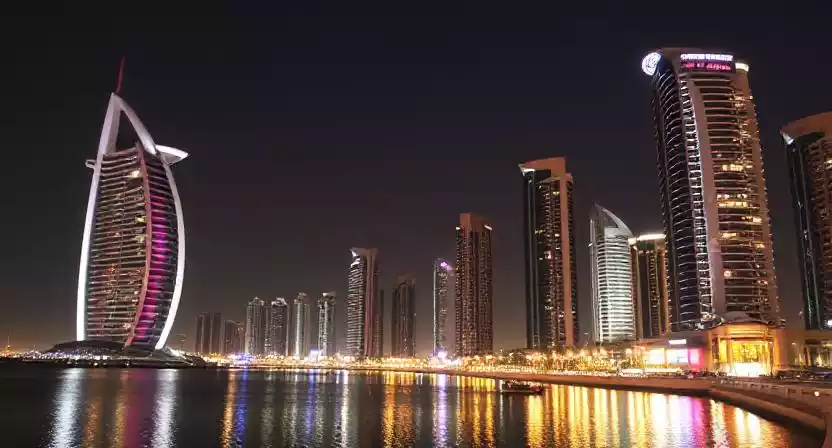Many people wonder about the United Arab Emirates’ (UAE) continental affiliation. Is it part of the vast Asian landmass? Or does it belong to the European continent? Let us explore the geographical reality of this fascinating nation. UAE in Asia or Europe?
Table of Contents
Geographical Location: Placing the UAE on the Map
The UAE is situated in Western Asia. More specifically, it lies in the Middle East. This region is a crucial part of the Asian continent. The UAE occupies the southeastern tip of the Arabian Peninsula. The Arabian Gulf borders its northern and northwestern sides. Consequently, its geographical coordinates firmly place it within Asia.
Furthermore, the UAE shares land borders with Saudi Arabia to the west and south. It also shares borders with Oman to the southeast and northeast. These neighboring countries are also located in Asia. These physical connections solidify the UAE’s Asian identity.
In addition to land borders, the UAE has maritime borders. These are in the Arabian Gulf with Qatar and Iran. The Gulf of Oman also forms a maritime border with Oman. All these surrounding nations are part of Asia. Therefore, geographically, the UAE’s location is undeniably Asian.
Understanding Continental Definitions
Continents are large, continuous masses of land. Geographers typically recognize seven continents. These are Africa, Antarctica, Asia, Australia, Europe, North America, and South America. The boundaries of these continents are based on geographical, historical, and cultural factors.
Asia is the largest continent by both area and population. It encompasses a vast array of cultures, climates, and landscapes. The Middle East, where the UAE is located, is a subregion of Asia. It is known for its rich history, diverse cultures, and strategic geographical importance.
Europe, on the other hand, is a separate continent located to the west of Asia. The Ural Mountains and the Caucasus Mountains are often considered the geographical boundary between Europe and Asia. The UAE lies significantly to the southeast of this boundary.
The UAE’s Cultural and Historical Ties to Asia
Beyond its geographical location, the UAE’s cultural and historical ties firmly link it to Asia. The region has been a crossroads of civilizations for millennia. It has witnessed the rise and fall of empires. Trade routes connecting East and West passed through this area. Consequently, the UAE’s heritage is deeply intertwined with the broader Asian narrative.
The languages spoken in the UAE, primarily Arabic, are part of the Afro-Asiatic language family. This family has its roots in both Africa and the Middle East. The traditions, customs, and social structures of the UAE reflect influences from other Asian cultures.
Furthermore, the Islamic faith, which is the dominant religion in the UAE, originated in the Middle East. Islam is a major religion across Asia. Its influence on the UAE’s culture, law, and daily life is profound. This shared religious heritage further connects the UAE to the Asian continent.
Economic Connections within Asia
The UAE plays a significant role in the Asian economy. It is a major hub for trade, finance, and tourism. Its strategic location makes it a vital link between East and West. The UAE has strong economic ties with other Asian nations. These include China, India, Japan, and South Korea.
The UAE is a major exporter of oil and gas. A significant portion of its energy exports goes to Asian countries. It also imports a wide range of goods from Asia. The flow of trade and investment between the UAE and other Asian economies is substantial. This economic interdependence reinforces its Asian identity.
Moreover, the UAE is actively involved in regional economic initiatives within Asia. It is a member of various Asian organizations and forums. These collaborations aim to promote economic growth and cooperation across the continent.
Dispelling Misconceptions
Sometimes, confusion arises due to the UAE’s modern infrastructure and global outlook. Its impressive skyscrapers, international airports, and cosmopolitan cities might lead some to associate it with European or Western modernity. However, these developments do not change its fundamental geographical location.
The UAE’s embrace of innovation and its engagement with the global community are testaments to its progress. These advancements are built upon its unique cultural heritage and its place within Asia. It successfully blends tradition with modernity.
Furthermore, the UAE’s climate, characterized by hot summers and mild winters, is typical of the Middle Eastern region of Asia. Its desert landscapes and coastal areas are also characteristic of this part of the continent. These environmental factors further underscore its Asian identity.
The UAE’s Role in Asian Affairs
The UAE is an active participant in regional and international affairs within Asia. It plays a crucial role in promoting stability and cooperation in the Middle East. It engages in diplomatic efforts to resolve conflicts and foster understanding.
The UAE is a member of the Arab League and the Gulf Cooperation Council (GCC). These are regional organizations comprising Arab nations in Western Asia and North Africa. Its active involvement in these groups highlights its commitment to the region.
Moreover, the UAE has been a strong advocate for multilateralism and international cooperation within the Asian context. It participates in various Asian forums and initiatives aimed at addressing shared challenges and promoting common interests.
Conclusion: The Undeniable Asian Identity of the UAE
In conclusion, the evidence overwhelmingly confirms that the United Arab Emirates is located in Asia. Its geographical position on the southeastern tip of the Arabian Peninsula firmly places it within the Asian continent. Its cultural and historical ties are deeply rooted in the Middle East and the broader Asian context. Its economic connections are primarily with other Asian nations. Its active role in regional affairs further solidifies its Asian identity.
Therefore, the question of whether the UAE is in Asia or Europe has a clear and definitive answer. The UAE is a vibrant and dynamic nation that proudly belongs to the continent of Asia. Its “continental secrets” are not about its location, but rather the rich tapestry of its history, culture, and its significant role in the Asian landscape. Understanding its true continental home allows for a more accurate appreciation of its place in the world. The UAE’s future is intertwined with the future of Asia. Its progress contributes to the growth and development of the entire continent. It stands as a testament to the dynamism and diversity of Asia in the 21st century.
Its strategic location within Asia has shaped its history and continues to influence its present and future. The UAE acts as a bridge between East and West. It facilitates cultural exchange and economic partnerships. Its identity as an Asian nation is integral to its global standing.
The UAE’s commitment to progress and innovation does not diminish its Asian roots. Instead, it showcases the potential for growth and development within the continent. It serves as an inspiration for other nations in Asia. Its success story is part of the larger Asian narrative of advancement and prosperity.
Therefore, when considering the continental affiliation of the UAE, the answer remains clear. It is a proud and significant member of the Asian family. Its contributions to the continent are substantial. Its future is inextricably linked to the progress and prosperity of Asia. The exploration of its “continental secrets” reveals not a hidden location, but a deep and abiding connection to the Asian continent.



